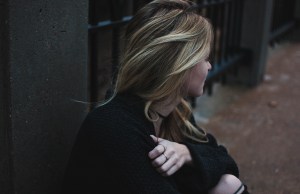
- Social anxiety affects nearly one in eight adults and goes far beyond normal nervousness—it creates persistent, intense fear of being judged in everyday situations.
- It’s different from shyness: Social anxiety significantly disrupts work, relationships, and daily activities, while shyness typically doesn’t interfere with functioning.
- Professional treatment is highly effective: Cognitive behavioral therapy and medications like SSRIs can dramatically reduce symptoms, often within several months.
- You can start managing symptoms today with grounding techniques, thought challenging, and calming self-talk while you seek professional support.
Imagine attending a party where every conversation feels like a performance you’re failing. Your heart races as you walk through the door. You’re convinced everyone is staring at your outfit, judging your awkward small talk, or noticing how your hands shake when you reach for a drink. After forcing yourself to stay for an hour, you replay every interaction on the drive home, cringing at what you said—or didn’t say.
This experience affects nearly one in eight adults at some point in their lives, making social anxiety one of the most common mental health conditions. Unlike occasional nervousness before a big presentation, social anxiety—also called social phobia—creates intense, persistent fear that can make everyday interactions and being around people feel overwhelming.
Here, we break down what it feels like to have social anxiety, what causes it, and effective ways to manage.

What Does Social Anxiety Feel Like?
Social anxiety creates a constant sense of being “on stage” in social situations, even during routine interactions like ordering coffee or making small talk with neighbors.
“Social anxiety can feel like a ‘panicky’ sensation where you’re hyperaware of how others might perceive you,” explains Alex Cromer, a licensed professional counselor at Thriveworks. “It can be very isolating, as these thought patterns can influence your view of reality, making you believe others are judging you far more harshly than they actually are.”
The Diagnostic and Statistical Manual of Mental Disorders (DSM-5) outlines specific criteria for social anxiety disorder. Here’s what those clinical social anxiety symptoms actually feel like in real life:
Intense Fear of Being Judged
Clinical definition: Fear of social situations that may involve being scrutinized or observed by others.
What it feels like: You walk into a room convinced everyone is analyzing your appearance, voice, or behavior. Even when people are friendly, you assume they’re secretly criticizing you or talking about you when you’re not around.
Fear That Your Anxiety Shows
Clinical definition: Worry that others will notice your anxiety symptoms and make fun of you.
What it feels like: Not only are you anxious, but you’re anxious about being anxious. You’re constantly checking if your voice sounds shaky, if you’re sweating, or if people can tell you’re uncomfortable—which only makes the anxiety worse.
Avoiding Social Situations
Clinical definition: Consistent avoidance of feared social interactions. In children, this fear is expressed through cries, clinging, and tantrums.
What it feels like: Since you feel people’s eyes on you when you’re simply existing in the world, social situations are extremely overwhelming. They amplify all the negative voices in your head, sometimes to the point where you struggle to think straight. You decline invitations, skip work events, or find excuses to avoid situations where you might be noticed or judged. When avoidance isn’t possible, you endure these situations with intense distress.
To receive a diagnosis, these symptoms must significantly interfere with daily life and not be better explained by another condition or substance use.
What Causes Social Anxiety?
Social anxiety doesn’t have a single cause, but research identifies several key factors that contribute to its development:
The Most Common Causes
Family history and genetics: Studies show social anxiety runs in families. If a parent or sibling has social anxiety, you’re 2 to 6 times more likely to develop it yourself—whether due to genetic factors or learned family patterns around social situations.
Negative social experiences: Childhood bullying, public embarrassment, family conflict, neglect, or traumatic social interactions can trigger lasting fears about social judgment. Even witnessing someone else being humiliated can sometimes contribute to social anxiety development.
Other Contributing Factors
Low self-esteem: When you already doubt your worth, concerns about others’ opinions feel more threatening and believable.
Social media exposure: Constant comparison to others’ curated online lives—especially during adolescence—can fuel feelings of inadequacy and fear of judgment.
Cultural and social stigma: Growing up in environments where being different is discouraged or criticized can heighten sensitivity to social evaluation.
How Do I Know if I Have Social Anxiety or If I’m Just Shy?
Many people wonder whether their social discomfort is normal shyness or something more significant. The key difference lies in severity and impact on daily functioning.
“Simply put, being shy can be an obstacle to engaging in social interactions, but very rarely causes actual impairment or disruption to functioning,” Cromer says. “When you’re shy, you might experience difficulty ‘warming up’ to engagement in social situations and settings. However, social anxiety causes significant and chronic impairments to functioning and can prevent engagement in these situations altogether.
Here are some traits that seem to be shared on the outside, but actually differ internally:
| Aspect | Shyness | Social Anxiety |
|---|---|---|
| How you feel around others | Prefer listening to talking, but comfortable once conversation starts | Constant worry about what others think, even with close friends |
| Starting conversations | Feel awkward but willing to try once you warm up | Avoid speaking first due to fear of saying something wrong |
| Making friends | Takes time to open up, but friendships feel natural once formed | Might have close friendships, but they are still filled with anxiety about how their friends perceive them |
| Social events | Initially quiet, but usually enjoy yourself once you settle in | Consistently overwhelming and distressing, regardless of how long you’re there |
| Daily life impact | Might miss some social opportunities, but doesn’t interfere with work or responsibilities | Significantly affects job performance, relationships, or basic activities like shopping |
If your social fears prevent you from living the life you want—affecting your career, relationships or basic daily activities—it may be social anxiety rather than shyness.
Effective Coping Strategies for Social Anxiety
These evidence-based techniques, recommended by mental health professionals, can help you manage social anxiety symptoms in the moment and build confidence over time.
1. Ground yourself using your senses.
When anxiety peaks, grounding techniques redirect your focus from anxious thoughts to your immediate surroundings.
Try the 5-4-3-2-1 technique:
- Name five things you can see
- Four things you can touch
- Three things you can hear
- Two things you can smell
- One thing you can taste
Box breathing also helps: Breathe in for four counts, hold for four, exhale for four, hold for four, repeat.
“Any sort of sensory grounding skills can help you regulate your nervous system and regain control over racing thoughts,” Cromer says.
2. Challenge your anxious thoughts.
Challenging your thoughts requires you to take a moment, assess the validity of the thought, and think of new ways to react to it that could be more beneficial.
For example, if you start getting nervous in a social setting, try to root out the thought behind it. Maybe it’s “People are judging me for the way I look” or “Everyone is really offended by what I just said.”
“Think of yourself like a lawyer in a court case,” Cromer says. Ask yourself:
- What specific evidence supports this worry?
- What would I tell a friend having this same thought?
- What’s the most realistic outcome here?
- Have I been wrong about people judging me before?
Most of the time, you’ll find little actual evidence for your fears.
3. Use calming self-talk.
Prepare supportive phrases to counter negative self-talk in challenging situations. For example:
- “I belong here just like everyone else”
- “Most people are focused on themselves, not judging me”
- “I can handle feeling uncomfortable—it won’t last forever”
- “My worth isn’t determined by others’ opinions”
- “I cannot control the thoughts of others”
- “I’m here to connect, not to perform”
Practice these phrases when you’re calm so they feel natural during stressful moments.
Treatment Options for Social Anxiety
Professional treatment significantly improves social anxiety symptoms, with many people seeing substantial improvement within several months.
Therapy
Cognitive behavioral therapy (CBT) is what’s most commonly used for treating social anxiety. CBT helps you identify negative thought patterns and gradually change your responses to social situations.
Key CBT techniques include:
- Cognitive restructuring: Learning to recognize and challenge anxious thoughts
- Behavioral experiments: Testing whether your fears are accurate in real-world situations
- Exposure therapy: Gradually facing feared social situations in a safe, controlled way
Many people start with less challenging situations (like making small talk with a cashier) before progressing to more difficult scenarios (like giving presentations or attending parties).
Medication
Several types of medication effectively reduce social anxiety symptoms:
Antidepressants (most common):
- SSRIs: Paroxetine (Paxil), sertraline (Zoloft)
- SNRIs: Venlafaxine (Effexor XR)
Beta-blockers (for performance anxiety):
- Propranolol, metoprolol, atenolol—helpful for specific situations like public speaking
Anti-anxiety medications (short-term use):
- Clonazepam (Klonopin), diazepam (Valium), lorazepam (Ativan), alprazolam (Xanax)
Medication works best when combined with therapy, as it reduces symptoms while you learn long-term coping skills.
When to Seek Professional Help
Consider reaching out to a mental health professional if your social anxiety:
- Prevents you from working, going to school, or maintaining relationships
- Leads you to avoid necessary activities like shopping, medical appointments, or work meetings
- Causes significant distress that interferes with your quality of life
- Results in using alcohol or other substances to cope with social situations
You don’t have to navigate social anxiety alone. Mental health professionals can assess your specific situation, create a personalized treatment plan, and provide the tools you need to engage more confidently with the world around you.
Social anxiety is treatable, and with the right support, you can develop the skills to manage symptoms and build meaningful connections. If you’re ready to take that step, the experienced professionals at Thriveworks are here to help you move toward a more confident, fulfilling social life.













